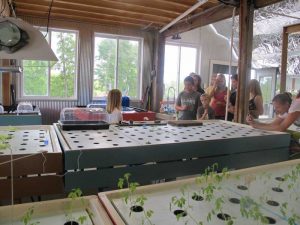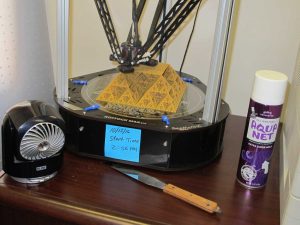
Yesterday we made a trip to SeeMeCNC in Goshen, Indiana to get a large format Rostock 3D printer kit from the manufacturer. SeeMeCNC began as Blackpoint Engineering 20 years ago, but got into the open source 3D printing world early on and began making 3D printers as SeeMeCNC in 2011, their primary business today. Their main product line is a series of 3D printers based on the delta robot design, versus the more traditional Cartesian design in most RepRap style printers that uses XYZ coordinates.
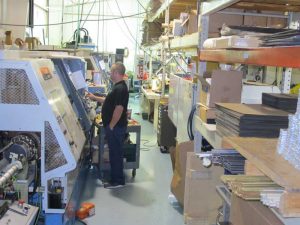
SeeMeCNC embraces the open source design movement. Their design information (both hardware and software) is readily available and the active user community helps to improve it. They also make the parts right here in Indiana. Once you see all the equipment jammed into their facility, you realize this is not a firm that buys different parts and boxes them up; they actually design and make their own parts to have parts designed for each product and to have better quality control.
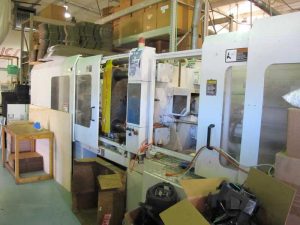
We currently have a member loaned Printrbot Metal Simple that is an awesome compact printer, but wanted something for the makerspace that offered a little larger build area. A delta robot design is a different design that most of our participants have seen (except for Travis who sells 3D printer parts). We chose the Rostock Max V3 printer, which has a build area of 275mm dia. by 400mm tall (10.8”x15.7”). The SeeMeCNC Rostock line is well proven; the new version adds an accelerometer probe on the hot end plus significant fan and heater improvements. They’re transitioning over from the V2 due to simplified parts and reduced assembly time.
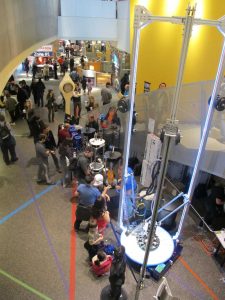
Thanks to JJ in engineering who gave us a great tour. We’ll be putting the unit together over the next week or two (if we can wait that long!). Join us or come to one of the open shop nights on our events page – we’ll be glad to show it off!

